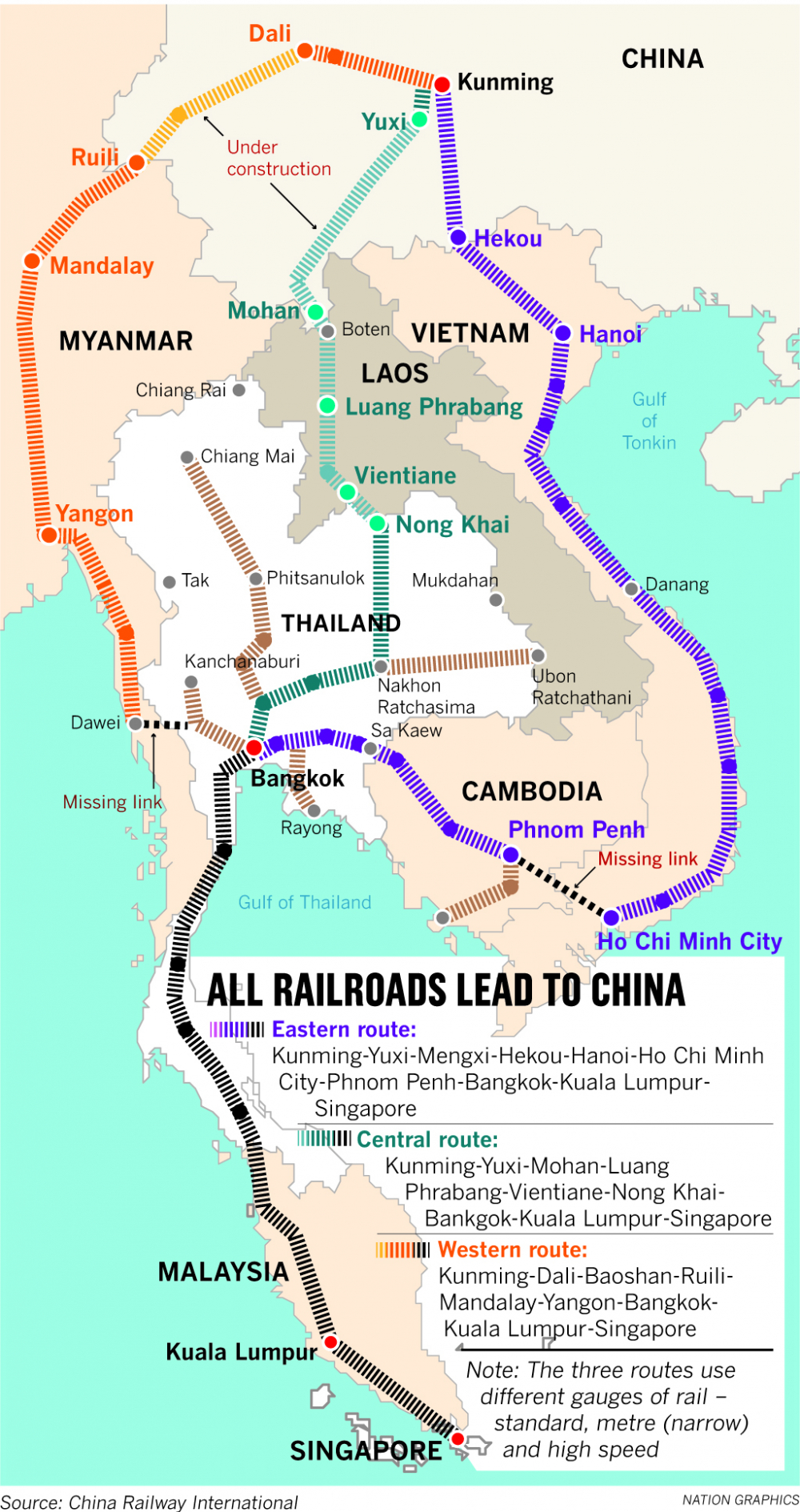China has taken significant steps toward realizing its vision of a trans-Asian railway network that connects Southeast Asia through notable progress in rail projects within Laos and Thailand. However, the actualization of this dream remains uncertain, as various countries in the region are currently in different phases of development and exhibit varying levels of commitment to the project.
According to the International Railway Organisation, China's railway system is one-tenth the length of the world's total railway network, yet it accommodates an astonishing 25 percent of the global railway traffic volume. This remarkable statistic is accompanied by China's impressive high-speed rail infrastructure, which spans approximately 25,000 kilometers and constitutes 60 percent of the world's total high-speed rail network. Each day, China operates over 5,000 high-speed trains, carrying a staggering 5 million passengers. Yang Zhongmin, the chairman of China Railway International, proudly declares that China ranks first in the world in terms of high-speed train operations.
China's advancements in rail technology have not gone unnoticed on the global stage. The state-owned enterprise China Railway has emerged as a major player in 50 rail projects across 40 countries, with a particular focus on the Association of Southeast Asian Nations (ASEAN) region. Chinese rail technology is now internationally competitive, and the country aims to complete the trans-Asian railway, connecting high-speed networks in multiple countries.
China has already made significant progress in several ASEAN countries. In Indonesia, the construction of the first 350kph high-speed train for ASEAN nations has begun, with the initial route connecting Jakarta and Bandung over a distance of 142 kilometers. This project is expected to commence construction early this year. Similarly, in Laos, a 440km standard gauge rail project commenced in late 2016 and is slated for completion by 2021.
Thailand, after five years of negotiation, has taken significant steps in implementing its high-speed train project. In December of the previous year, Prime Minister General Prayut Chan-o-cha presided over the groundbreaking ceremony for the first phase of the Thailand-China high-speed rail project, which will link Bangkok and Nakhon Ratchasima. The second phase will extend to Nong Khai, ultimately connecting to the Lao network by 2022.
While the exact route to link Singapore to Kunming has not been determined by ASEAN, China has expressed its interest in developing three major routes: an eastern route via Vietnam, a middle route through Laos, and a western route passing through Myanmar before connecting to Thailand, Malaysia, and Singapore. China has already made progress on its own territory, constructing a standard gauge railway to the China-Vietnam border for the eastern route. For the middle route, construction has begun on the railway line from Kunming to Mohan, the border with Laos, which is expected to open in 2020. The western route, from Kunming to Ruili, started construction several years ago and is projected to open in 2025.
Yang Zhongmin acknowledges that while China's section of the trans-Asian railway could be completed within five or six years, the overall timeline depends on the socio-economic development of other countries involved and their ability to secure funds for the project. Progress is underway for the middle route, with the construction of the Laotian section and Thailand's section.

Additionally, plans are in place for a high-speed railway link between Kuala Lumpur and Singapore in Malaysia and Singapore respectively. However, challenges remain, particularly in Cambodia, where a 200km portion of the eastern route is yet to be realized. Myanmar is also planning a section within its territory for the western route and considering a future link to Bangkok.
One of the hurdles to overcome in establishing the trans-Asian railway is the issue of different rail gauges in certain countries, such as Thailand and Cambodia. These variations could lead to inconveniences and result in ongoing high operational costs. Yang Zhongmin highlights that while technical standards in Laos and Thailand are the same, their construction phases differ.
China's railway system handles a disproportionately large share of global railway traffic, thanks to its extensive high-speed rail network. China's influence in rail technology extends beyond its borders, with involvement in numerous rail projects worldwide. The trans-Asian railway project is a key focus, with progress being made in ASEAN countries, albeit with some challenges along the way. The ultimate goal is to establish efficient rail connections across Asia, promoting regional integration and economic development.
Source: The Nation



















